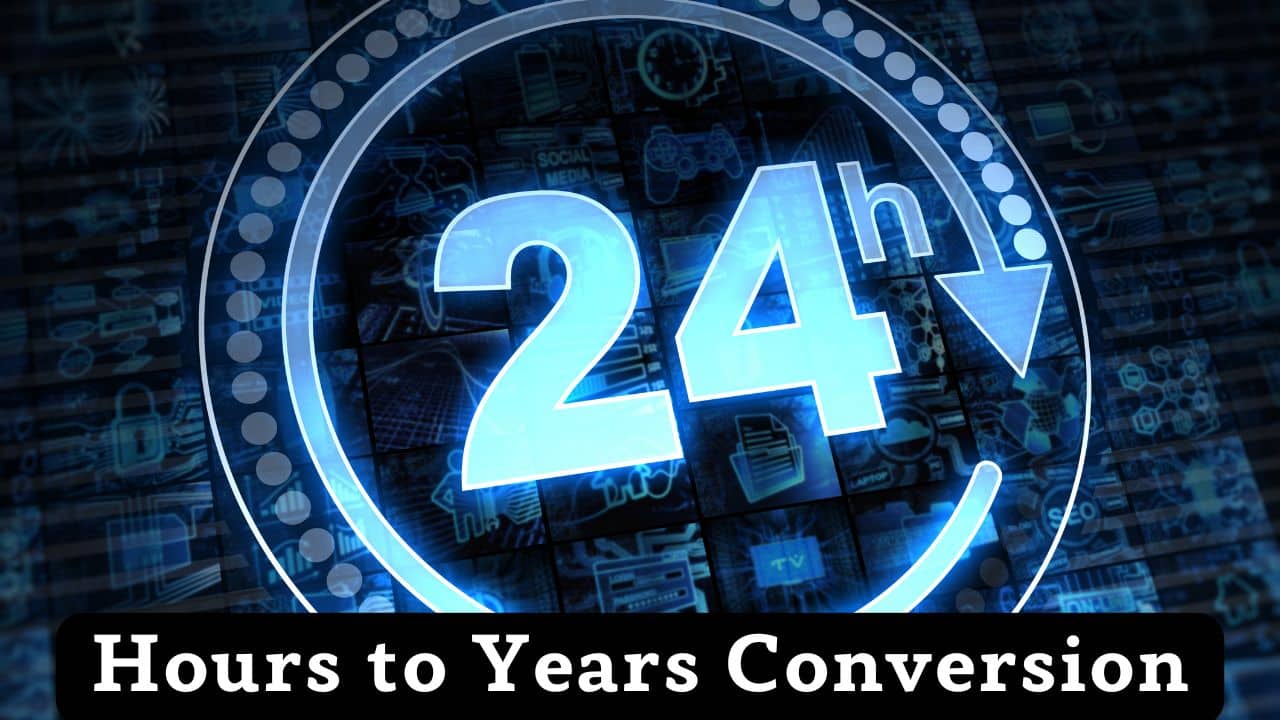Hours to Years Calculator
Precise time conversion with detailed breakdowns, quick presets, and educational insights

How Many Hours in Years
There are approximately 8760 hours in a year (365 days × 24 hours). Converting between hours and years helps with long-term planning, project management, and understanding time scales. This conversion is essential for calculating work hours, project timelines, and life planning.
The Conversion Formula
Years = Hours ÷ 8760
Hours = Years × 8760
The 8760-hour year is based on the standard 365-day year. Leap years have 8784 hours (366 days × 24 hours), but 8760 is used for general calculations.
Example: 17,520 hours ÷ 8760 = 2 years, or 5 years × 8760 = 43,800 hours
Time Structure & Understanding
Understanding the hour-to-year relationship:
24 Hours: One complete day
168 Hours: One week (7 days × 24 hours)
8760 Hours: One standard year (365 days × 24 hours)
8784 Hours: One leap year (366 days × 24 hours)
This conversion helps visualize long-term commitments and understand the scale of yearly projects
Quick Reference Table: Hours to Years
| Hours | Days | Weeks | Years | Common Usage |
|---|---|---|---|---|
| 1 | 0.042 | 0.006 | 0.0001 | One hour |
| 24 | 1.000 | 0.143 | 0.0027 | One day |
| 168 | 7.000 | 1.000 | 0.0192 | One week |
| 720 | 30.000 | 4.286 | 0.0822 | One month (30 days) |
| 2,190 | 91.250 | 13.036 | 0.250 | One quarter (3 months) |
| 4,380 | 182.500 | 26.071 | 0.500 | Half year (6 months) |
| 8,760 | 365.000 | 52.143 | 1.000 | One year |
| 17,520 | 730.000 | 104.286 | 2.000 | Two years |
| 43,800 | 1,825.000 | 260.714 | 5.000 | Five years |
| 87,600 | 3,650.000 | 521.429 | 10.000 | One decade |
Frequently Asked Questions
Why are there 8760 hours in a year?
There are 8760 hours in a standard year because it has 365 days, and each day has 24 hours (365 × 24 = 8760). Leap years have 8784 hours due to the extra day, but 8760 is used for general calculations and planning purposes.
How accurate is hours-to-years conversion?
Hours-to-years conversion using 8760 hours per year is quite accurate for most practical purposes. It’s based on the standard 365-day year and is widely used in business, project management, and planning. For precise astronomical calculations, slight adjustments may be needed.
What about leap years in hour calculations?
Leap years occur every 4 years and have 366 days instead of 365, resulting in 8784 hours instead of 8760. For long-term calculations spanning multiple years, this difference averages out to approximately 8765.25 hours per year.
When would you need hours-to-years conversion?
This conversion is useful for project planning, calculating total work hours over years, understanding equipment runtime, planning long-term goals, calculating training hours, and converting between different time scales in business and personal planning.
How do work hours relate to years?
A standard full-time work year is typically 2080 hours (40 hours/week × 52 weeks). This means a full-time worker spends about 23.7% of their year working (2080 ÷ 8760). This calculation helps in understanding work-life balance and career planning.
What’s the difference between calendar and business years in hours?
A calendar year has 8760 hours, while a business year (considering only weekdays) has approximately 2080-2096 working hours. The difference accounts for weekends, holidays, and vacation time, which is crucial for business planning and resource allocation.
Interesting Time Facts
Life Perspective: The average human lifespan of 80 years equals approximately 700,800 hours, helping put life’s moments into perspective and emphasizing the value of time management.
Historical Context: The 24-hour day system dates back to ancient Egypt, making our hour-to-year calculations consistent with thousands of years of timekeeping tradition.
Modern Applications: In the digital age, server uptime, project deadlines, and subscription services all rely on accurate hour-to-year conversions for planning and billing purposes.
Understanding time conversion helps in making better decisions about how we spend our most valuable resource: time itself.
